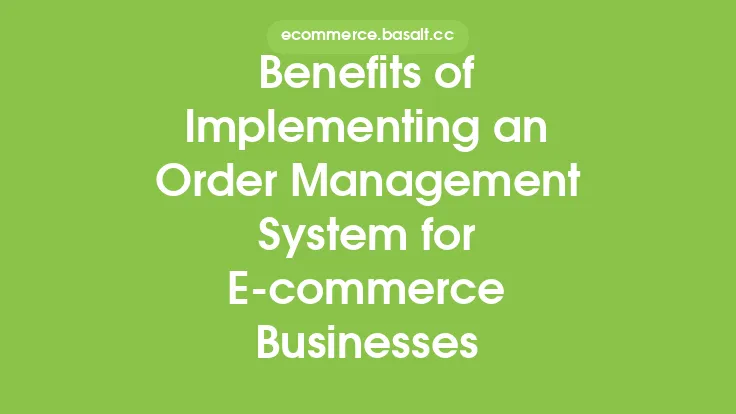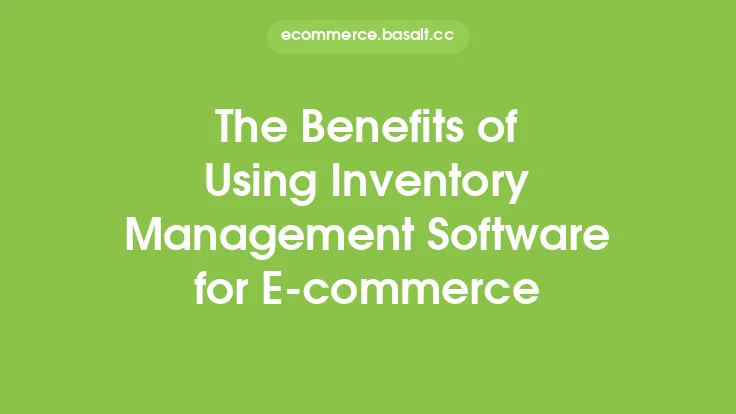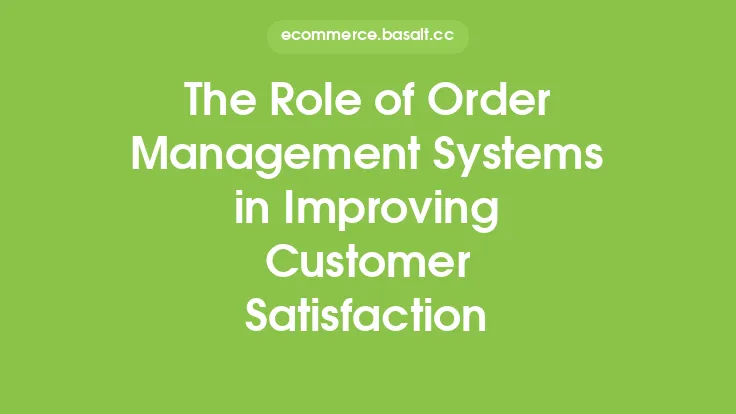Implementing a transportation management system (TMS) is a crucial step for businesses looking to optimize their shipping and logistics operations. A TMS is a software solution that enables companies to manage and coordinate their transportation activities, including routing, scheduling, and carrier selection. By leveraging a TMS, businesses can streamline their logistics operations, reduce costs, and improve customer satisfaction.
What is a Transportation Management System?
A transportation management system is a comprehensive software solution that helps businesses manage their transportation operations. It provides a centralized platform for managing all aspects of transportation, including shipment planning, execution, and tracking. A TMS typically includes features such as route optimization, carrier management, freight audit and payment, and business intelligence. By using a TMS, businesses can automate many manual processes, reduce errors, and improve the overall efficiency of their logistics operations.
Benefits of Implementing a Transportation Management System
The benefits of implementing a TMS are numerous. One of the primary advantages is cost savings. By optimizing routes and selecting the most cost-effective carriers, businesses can reduce their transportation costs. A TMS can also help businesses improve their delivery times, which can lead to increased customer satisfaction and loyalty. Additionally, a TMS can provide businesses with real-time visibility into their transportation operations, enabling them to make data-driven decisions and respond quickly to any disruptions or issues.
Key Features of a Transportation Management System
A TMS typically includes a range of features that enable businesses to manage their transportation operations effectively. Some of the key features of a TMS include route optimization, which uses algorithms to determine the most efficient routes for shipments; carrier management, which enables businesses to manage their relationships with carriers and negotiate better rates; and freight audit and payment, which automates the process of auditing and paying freight invoices. A TMS may also include business intelligence tools, which provide businesses with real-time visibility into their transportation operations and enable them to make data-driven decisions.
How to Choose the Right Transportation Management System
Choosing the right TMS for your business can be a complex process. There are many different TMS solutions available, each with its own strengths and weaknesses. When selecting a TMS, businesses should consider their specific needs and requirements. They should also evaluate the scalability and flexibility of the TMS, as well as its ability to integrate with other systems and technologies. Additionally, businesses should consider the total cost of ownership of the TMS, including the initial investment, ongoing maintenance and support costs, and any potential return on investment.
Implementation and Integration of a Transportation Management System
Implementing a TMS requires careful planning and execution. Businesses should start by defining their transportation management goals and objectives, and then selecting a TMS that meets their needs. They should also develop a comprehensive implementation plan, which includes training and support for users, as well as testing and quality assurance. Additionally, businesses should consider the integration of the TMS with other systems and technologies, such as enterprise resource planning (ERP) systems, warehouse management systems (WMS), and electronic data interchange (EDI) systems.
Best Practices for Using a Transportation Management System
To get the most out of a TMS, businesses should follow best practices for using the system. This includes regularly reviewing and updating transportation management processes and procedures, as well as monitoring and analyzing transportation data to identify areas for improvement. Businesses should also use the TMS to automate as many manual processes as possible, and to provide real-time visibility into transportation operations. Additionally, businesses should consider using the TMS to collaborate with carriers and other stakeholders, and to negotiate better rates and services.
Common Challenges and Opportunities
Despite the many benefits of implementing a TMS, there are also common challenges and opportunities that businesses should be aware of. One of the primary challenges is the initial investment required to implement a TMS, which can be significant. Additionally, businesses may face challenges in integrating the TMS with other systems and technologies, and in training and supporting users. However, there are also opportunities for businesses to use a TMS to drive innovation and improvement in their transportation operations. For example, businesses can use a TMS to test new transportation modes and routes, and to evaluate the effectiveness of different carriers and services.
Conclusion
In conclusion, implementing a transportation management system is a crucial step for businesses looking to optimize their shipping and logistics operations. A TMS provides a comprehensive software solution for managing transportation activities, including routing, scheduling, and carrier selection. By leveraging a TMS, businesses can streamline their logistics operations, reduce costs, and improve customer satisfaction. When selecting a TMS, businesses should consider their specific needs and requirements, and evaluate the scalability and flexibility of the system. With careful planning and execution, a TMS can help businesses achieve their transportation management goals and objectives, and drive innovation and improvement in their logistics operations.





